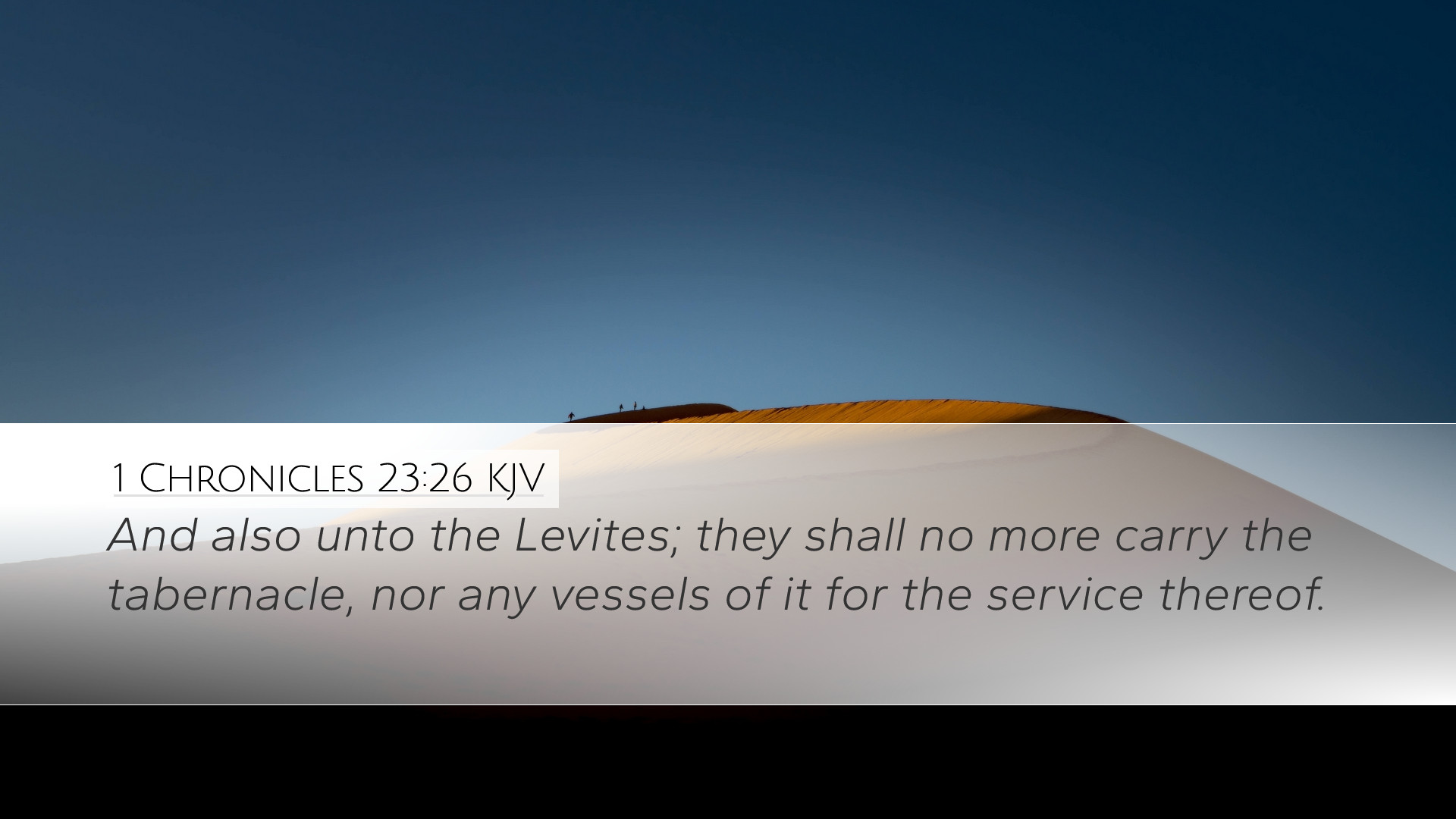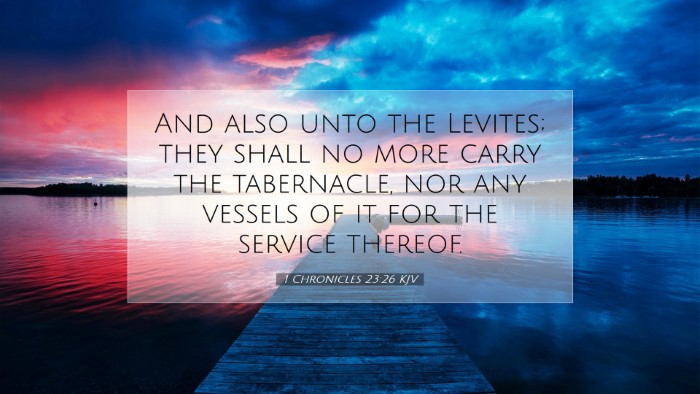Commentary on 1 Chronicles 23:26
Verse Text: "And said unto them, Ye shall no more carry the tabernacle, nor any vessels of it; for ye have borne the tabernacle, and all the vessels of it, from the day that I gave charge unto my servants the prophets unto this day."
Introduction
This verse from 1 Chronicles 23:26 marks a significant moment in the transition of Israel's worship and service to God. The context centers on the establishment of temple worship under David’s reign and the transition from the tabernacle to a more permanent structure.
Contextual Background
The book of 1 Chronicles presents a detailed account of Israel’s history with a strong emphasis on worship and the role of the Levites. This particular chapter focuses on the division of the Levites and their responsibilities in relation to the temple worship. It reflects the importance of order and dedication in the service to God.
Analysis of the Verse
This verse can be unpacked in several critical ways:
Shift from the Tabernacle
Matthew Henry emphasizes that this directive signifies a pivotal shift in Israel's worship practices, moving from the mobile tabernacle to a fixed temple. This reflects a maturation in Israel’s national identity and their relationship with God, as they are now ready to settle down in a promised land with a more structured form of worship.
The Role of the Levites
Albert Barnes notes the significance of the Levites, who were chosen to carry the tabernacle and its vessels. In this verse, God formally releases them from this role, recognizing their faithful service and underscoring the transition to the temple, where different responsibilities will emerge. This highlights the importance of the Levites in the history of worship in Israel, interceding between God and His people.
Historical Representation
Adam Clarke suggests that this directive reflects a deeper theological theme: God’s desire for a permanent dwelling place among His people. It symbolizes His faithfulness to His covenant and His provision of a stable environment for worship, contrasting sharply with the wanderings the Israelites experienced in the wilderness.
Theological Implications
The transition from the tabernacle to the temple is not merely logistical; it carries profound theological implications:
- The Presence of God: The temple represents God’s abiding presence with His people, contrasting with the transient nature of the tabernacle, which was symbolic of the interim phase.
- Significance of Worship: Establishing a temple emphasizes the order and reverence in worship practices, showcasing God’s holiness and the necessity of approaching Him in an orderly manner.
- Leadership and Service: It serves as a reminder for those in ministry about the importance of their roles. The Levites were chosen for particular tasks, emphasizing God's sovereignty in appointing leaders for His service.
Practical Applications for Today’s Believers
The lessons from 1 Chronicles 23:26 remain relevant for contemporary worship and church structure:
- Understanding Roles: Just as the Levites had defined roles, modern believers must engage in the body of Christ in a way that recognizes the unique gifts and responsibilities given to each member.
- Transition in Ministry: Churches often face periods of transition. This verse encourages congregations to embrace changes in their worship practices as they adapt to new contexts while remaining faithful to God’s calling.
- Commitment to Worship: The call to maintain worship with reverence and order reflects the need for modern congregations to prioritize meaningful and structured worship experiences.
Conclusion
1 Chronicles 23:26 serves as a crucial point in the narrative of Israel’s worship life. The verse encapsulates the transition from the nomadic worship of the tabernacle to a structured, temple-centered worship, signifying stability and the fulfillment of God’s promises. For pastors and scholars alike, this reminder of God’s faithfulness and the importance of worship should continually encourage believers to seek a deeper relationship with God through reverent service and dedication in their corporate worship settings.


